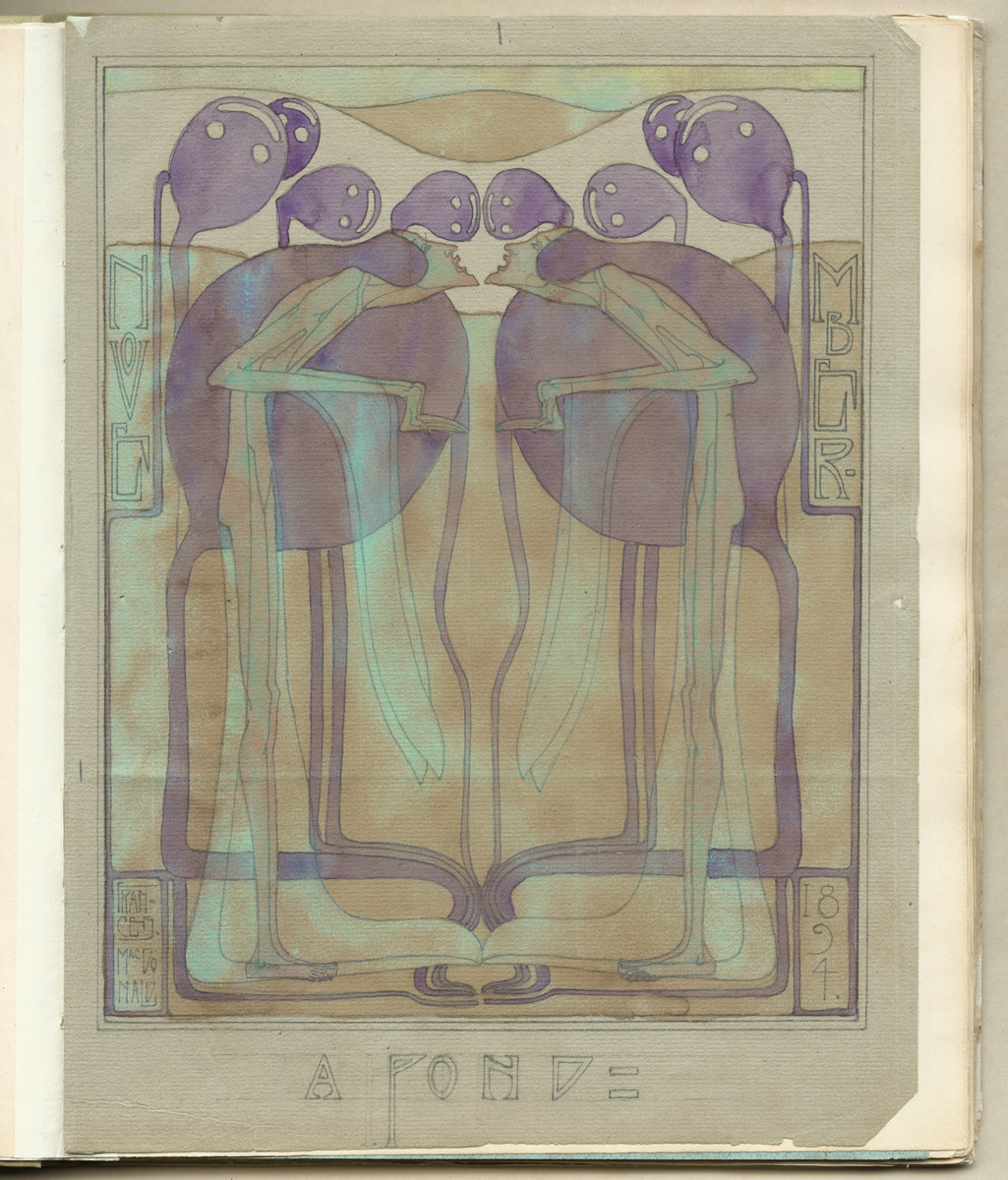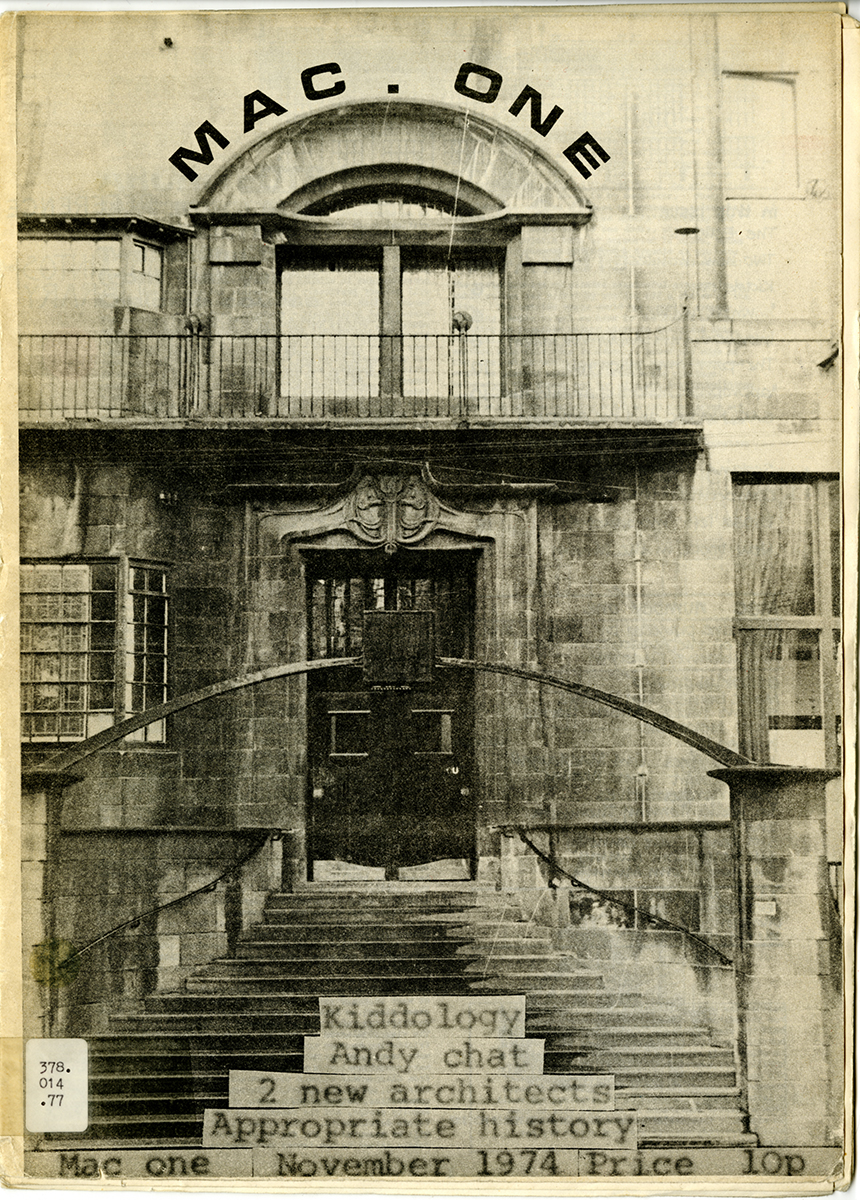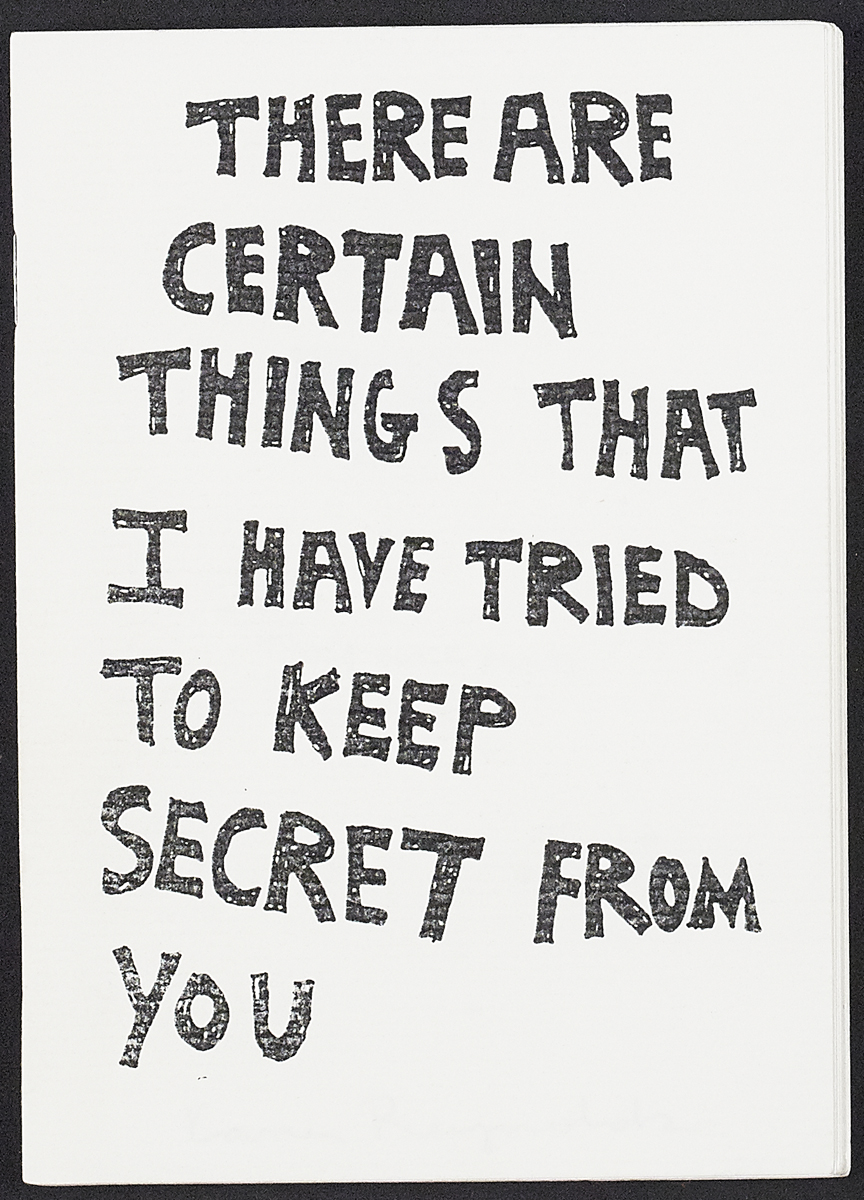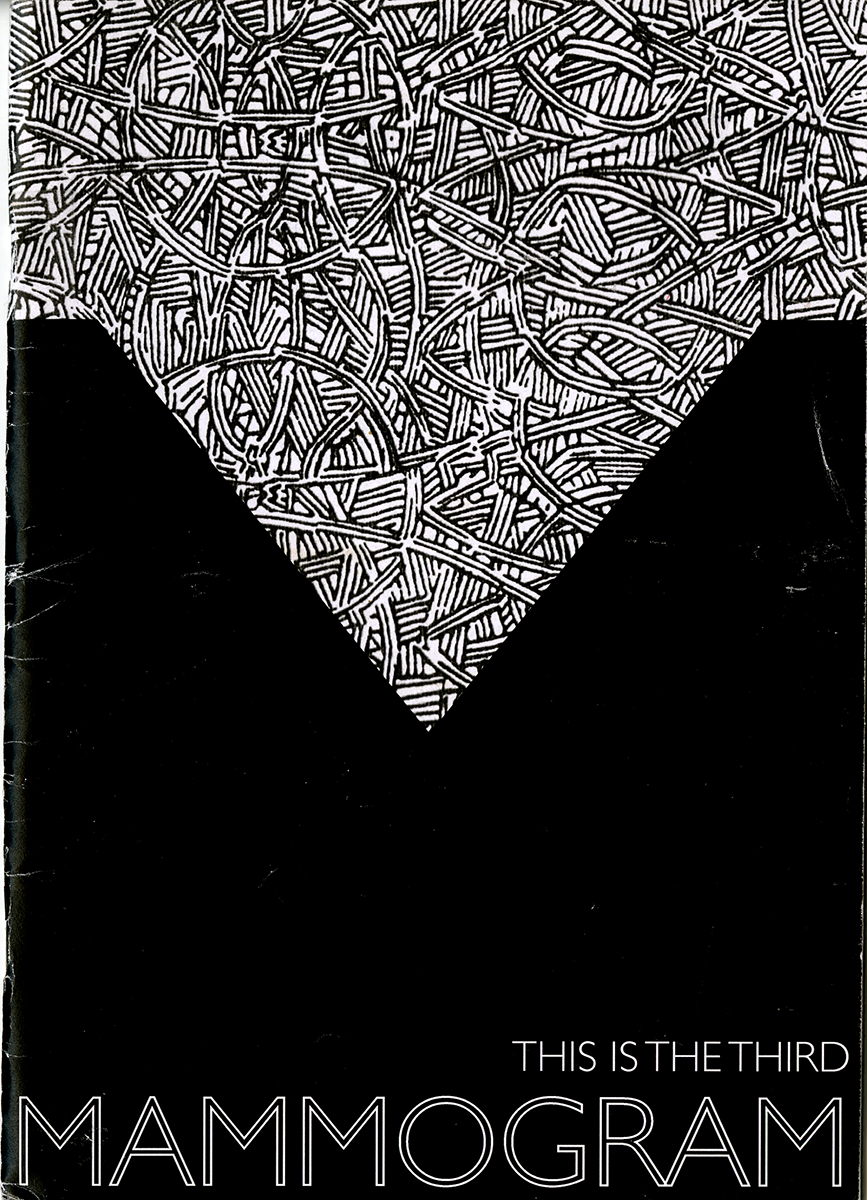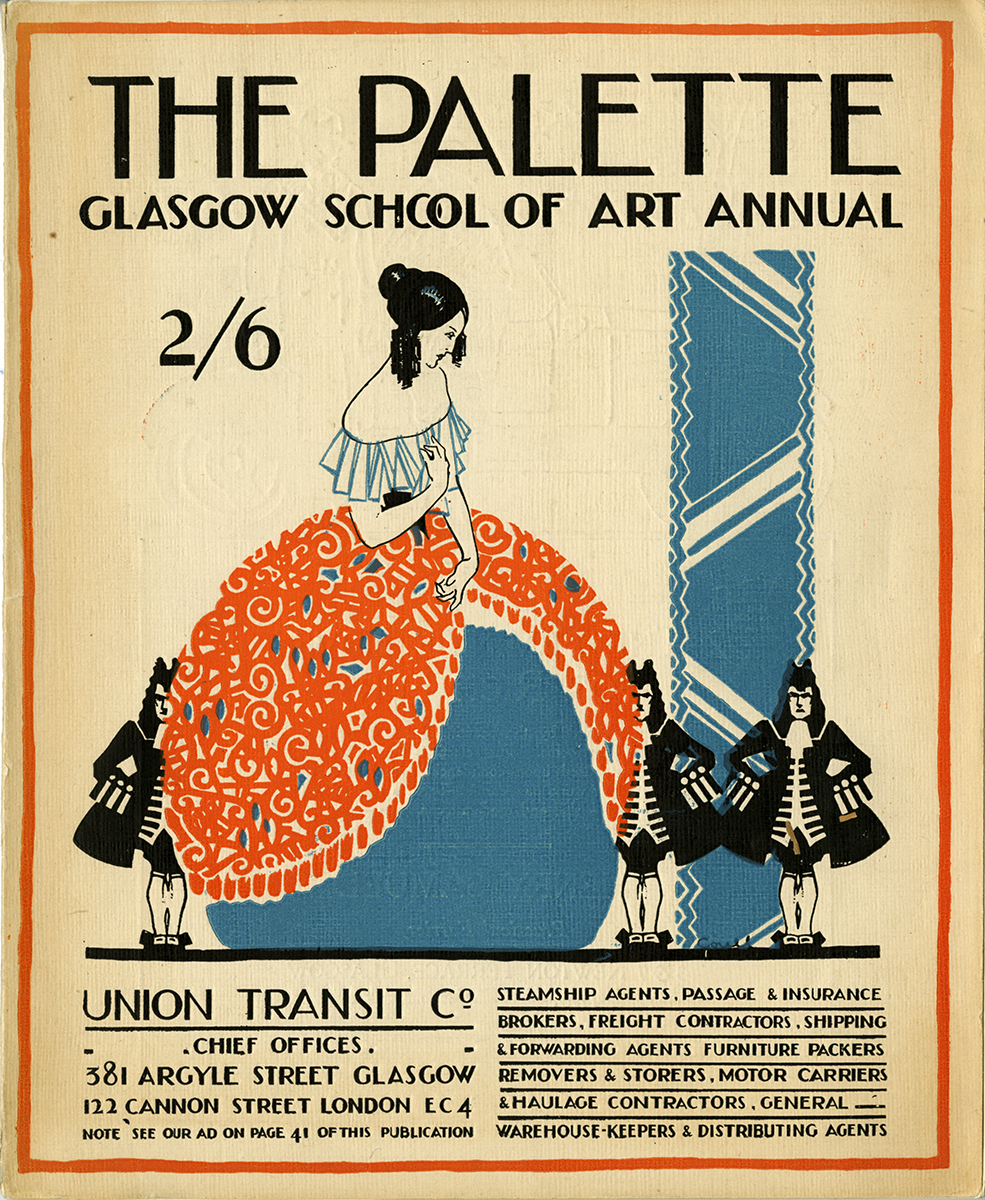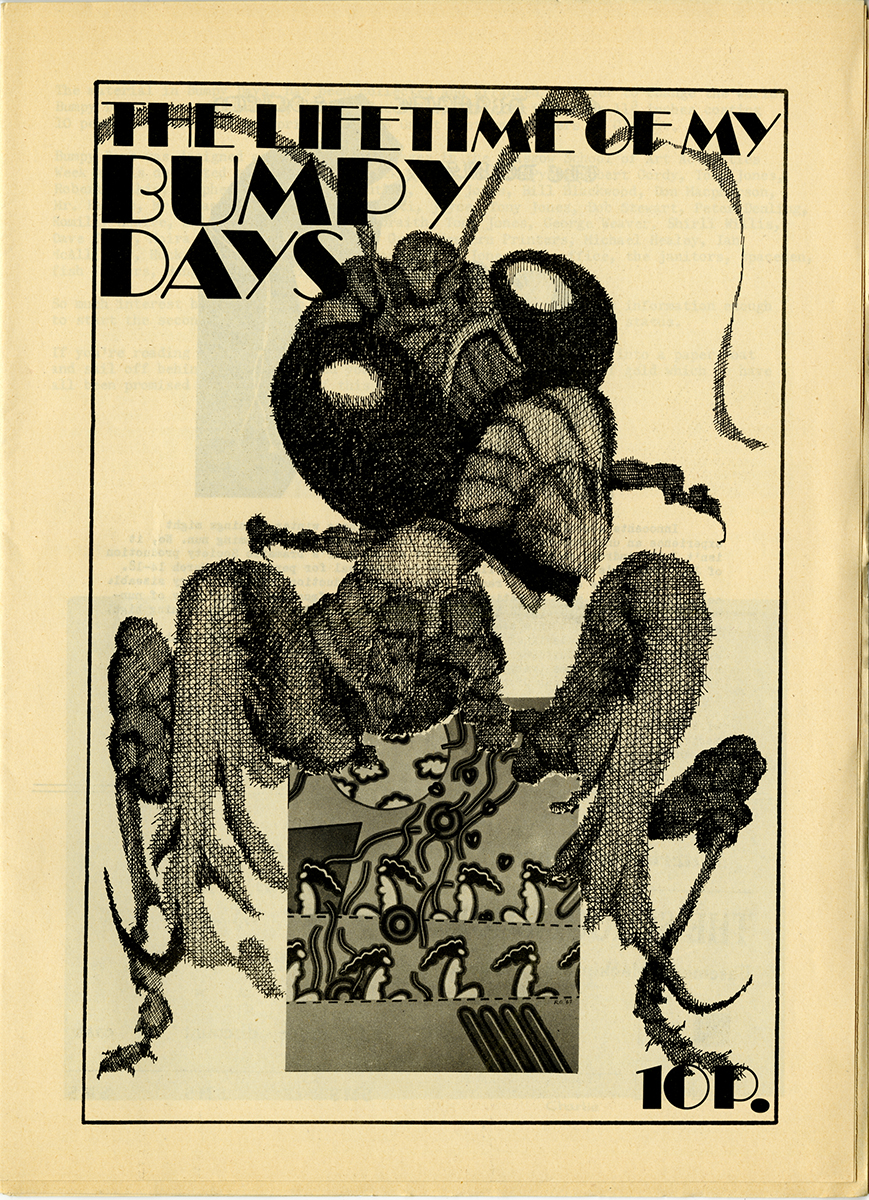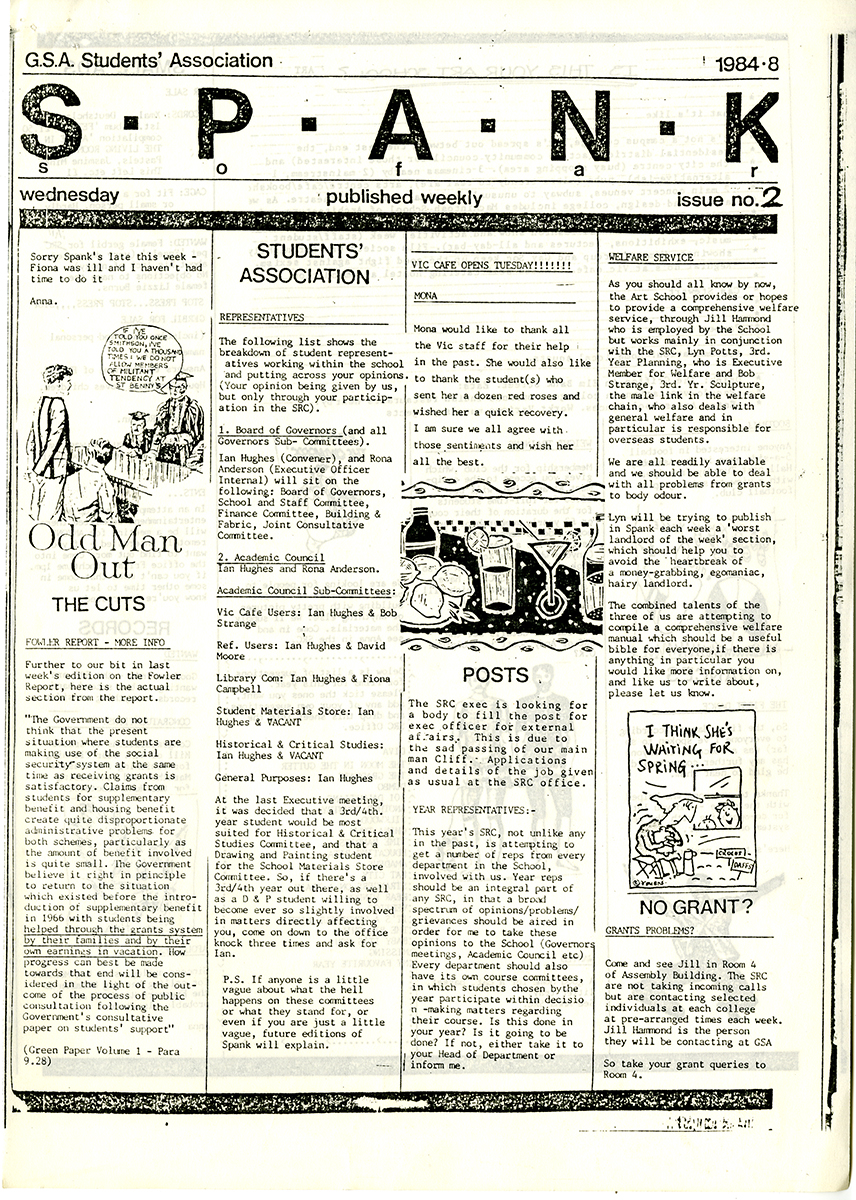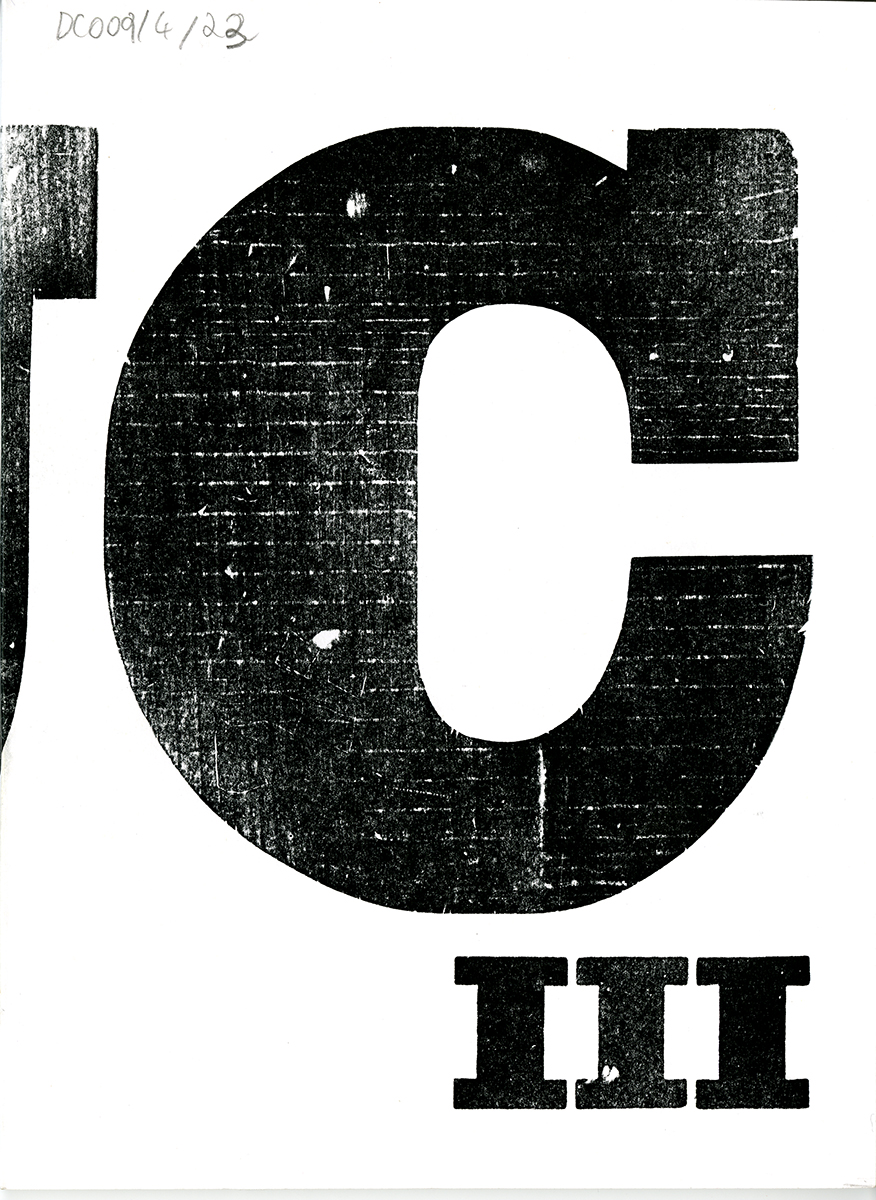Student Publications
Throughout the history of The Glasgow School of Art, students have found ways to express their creativity far beyond the limits of the curriculum. Alongside the many clubs and societies, events and activities that have shaped the life the art school, students have consistently documented and shared their artwork, ideas and experiences in vibrant and thought-provoking student magazines and publications.
The GSA Archives and Collections holds a large number of student magazines, comics and pamphlets, spanning well over one hundred years, which help illuminate the diverse interests, styles and politics of GSA students over time.
Time and again artists and writers have turned to each other’s mediums for inspiration, exploring new possibilities for creative thought that moves beyond the constraints of form.
Students at The Glasgow School of Art have been no exception – from handbound zines to photocopied newsletters, poetry to polemic to comic book, GSA students have frequently engaged the written word and printed page to expand and challenge their education, and express their artistic ideals.
The earliest and perhaps most famous student publication held by the archives is The Magazine, a collective work of original writing and design created by students of the GSA between 1893-1896. Its four handbound volumes, edited by Lucy Raeburn, feature rare, early watercolours and designs by artists including Charles Rennie Mackintosh, Margaret MacDonald, and Jessie Keppie, an important example of the distinct and ornate Glasgow Style. Also of note is the prominent role of women in the creation of The Magazine, a fact which highlights the integration of women in artistic life that took place at the art school at the turn of the twentieth century.
In fact, women feature heavily as editors, writers, artists and designers throughout the student publications held by the collection. The second volume of the 1920s ‘Glasgow School of Art Annual’ The Palette, for example, features a short story by designer De Courcy Lewthwaite Dewar, poetry by Sophia S. Hill as well as artwork by painter and illustrator Jessie I. Garrow and ceramicist and later GSA lecturer Georgina Goldie Killin among others. A later student magazine, the 1969 Folio – created to share the work of the student writers at The GSA and described by its editors as ‘an act of faith, hope, charity, and damp-eyed devotion’ – even features early work by poet and former Makar Liz Lochhead. Unsurprisingly, more contemporary publications continue this theme, including PAVILION, a 2005 magazine edited by Laura Smith, Emily Whittle and Rebecca Wilcox which features works in black and white by artists including Hanna Tuulikki and Rhianna Turnbull, as well as THE CLAQUE, a hand bound and printed pamphlet of delicate black and white drawings, prints and poetry featuring work by various students, created by Angharad Davies.
As a mode of production that falls outside of institutional structures as well as traditional modes of publishing (and exhibition), student publications offer a vital space of communication and experimentation to those whose voices may otherwise go unheard. The huge diversity of student artwork, poetry, short stories, political articles and exhibition reviews found in the collection’s publications speak exactly to the necessity of this space.
In fact, while students across the history of GSA have been closely attentive to and critical of the power structures at play both in and outside the classroom, they have rarely had a direct outlet for their criticisms or questions. A number of publications in the collection note this lack as a direct reason for creating a publication in the first place.
For example, the 1974 first issue of MAC, a student magazine from the School of Architecture, describes being the only architecture students’ magazine in Scotland at the time as ‘a sad fact… indicative of the unfair distribution and state of educational resources and communication in Scotland particularly’, while an article in the third issue, titled ‘a school is for students’ speaks directly to the frustrations students felt regarding their lack of input into the curriculum and structure of student life. Likewise, the ‘GSA Student Magazine’ MAMMOGRAM, published in 2008-9, describes its aim ‘to be a platform for discussion about what is going on in our art school. Something that we (the student body) have control over… it is important to use our collective power to make this school what we want it to be.’
These concerns arise especially in moments of political and economic upheaval. The second issue of MAMMOGRAM, published in late 2008, speaks directly to the financial crash and its impacts on art education, the brutal job cuts and redundancies made under the bureaucratic title of ‘restructuring’. Similarly, the G.S.A. Students’ Association 1980s and 90s weekly publications BLANK and SPANK consistently challenge the state of education at the time. The 1984-85 BLANK issue no. 7 includes a feature about ‘EDUKASHUN KUTS; a calendar of the attack on education’ that took place between 1979 and 1985, under Thatcher’s conservative government, while a Christmas special gives material advice on applying for state benefits in the holidays.
These newsletters, alongside many other student publications, also feature articles and events about political concerns and activism that go far beyond the walls of the art school. Issues including women’s rights, Gay rights, AIDS activism, appeals for charitable causes, anti-apartheid activism and collections for the miners feature prominently in the 1980s newsletters, while in the 2000s and 2010s, in publications such as Undercurrents, Fold and MAMMOGRAM, topics including the limits of liberal democracy, the limits of protest, artists copyright, and the complicity of artists in art institutions feature alongside student art and writing whose experiments navigate the distinctions between form and content.
Whether in sharing artwork, documenting events or experimenting with new ideas, the publications held in the Archives and Collections are crucial examples of students unceasingly seeking out and creating their own spaces for discussion, collaboration, and opposition. They are all fascinating and uniquely collaborative historical documents which give a sense of the social, political and artistic mood of the art school over time, providing an insight into the many ways creative and critical thought have entwined in students’ work, and the many ways their thoughts and activities have shaped connections with the artistic community and the wider world.

